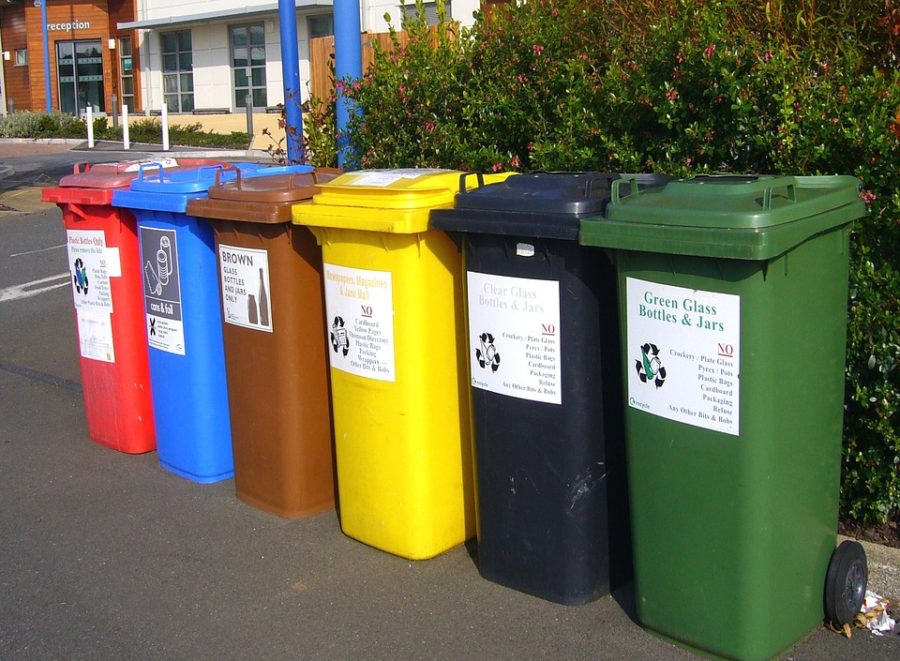America needs to minimize landfills, maximize recycling
According to a study by the University of Utah, less than 2 percent of the total waste (if you include waste water) stream in America is recycled. That means about 250 trillion pounds of waste is thrown into landfills in the United States—about the weight of 100 trillion elephants. The United States has surpassed every other nation to become the main trash producers in the entire world, beating out nations with populations in the billions like India and China. On the other end of the spectrum, Sweden recycles 99 percent of their waste—everything from light paper to electronic devices. The United States needs to follow the example of Sweden if Americans want the option of a cheap energy source, want to use logical, reusable materials and want to help save the environment—one habitat at a time.
Americans need an energy source for almost every interaction we have with machines—from microwaves to television to cars. As of 2017, most of Americans use fossil fuels more than any other energy source to fuel their lights, stoves and cars. Many fear that this dependence on fossil fuels is a dangerous game. If fossil fuels run out and Americans don’t have another option to fuel their lives, Americans may deal with an “energy crisis.” However, Sweden may have the solution which incorporates the million pounds of waste the average American throws away every year. According to The Sweden Recycling Revolution, Sweden incineration plants produce energy by burning the 50 percent of waste produced that would normally be thrown into a landfill. This may be the energy source America needs to invest in—minimizing our landfills and giving us an energy source that gets renewed every time someone puts their wrapper or old shoes in the trash.
Recycling saves resources, money and energy. Because of modern technology, we have the ability to recycle almost everything from tires to old televisions, and that is what Sweden has done. In order to make recycling easier for Swedish citizens, by law, every residential area is, at tops, only 1,000 feet away from a recycling center. The closest recycling center to Washington High School is 22,000 feet away. Most Americans are busy and don’t have time to drive five miles away every time they have a box to recycle; it’s less time-consuming and easier just to throw it in the trash. However, if every populated residential area in the United States had a recycling center within 1,000 feet where they could recycle metals, plastics and tires year round, Americans could reuse so many resources which would lead to less money coming out of their checkbook every year.
Every time you fill up your gas tank, think about how much has gone into making that gasoline available to you. Habitats that animals and plants have thrived in for years have been destroyed because of oil drills and mining for coal all throughout the world. However, many renewable energy sources like wind and solar can be placed on existing man made objects like skyscrapers or houses which allows less habitats to be destroyed for energy. Because of human advancements and expansions, many animals and plants have already gone extinct, and if Americans don’t change their ways, more and more are predicted to never naturally exist.
Now creating incineration plants, building more recycling centers and employing thousands to work in the plants and centers is expensive. Some Americans may say the country is in debt, and simply can’t afford all these expenditures. You have to spend money to make money (or in this case save money). Building these plants and centers would benefit thousands of Americans via employing construction workers and their families. Those construction workers would reinvest their money in the local economy when they buy a burger at the local diner or buy flowers for their spouse at the local flower shop. In the long run, recycling also provides cheaper resources and burning produces an energy source that doesn’t impact the ozone layer as severely as the ozone layer.
The Sweden recycling program is showing that a modern, first world country can keep all their luxuries and recycle effectively and efficiently. Americans can minimize landfills and future environmental problems by maximizing their recycling efforts. If Americans follow Sweden’s lead, they can have low-cost energy sources, materials being reused for other purposes after being thrown away and saving the habitats of plants and animals. Although it may be a considerable time until the United States has the recycling program Sweden has, Americans can speed the process along faster by calling their local senators and representatives and voice their mind about why they believe recycling should be a top priority on the political agenda.

This is Sophie's third year on staff for The Advocate. She was previously features editor before becoming Editor-in-Chief with Madilynn Kipp. Sophie covers...










![Jaywalkers junior dancers Isabella Fitzgerald and Gabrielle Ziglin pose before the start of their performance in the Big Blue Jay Gym on Wednesday, Jan. 5. "[Nationals] is such a big competition, but obviously we want to go, we want to do good and we want to maybe take something home," Ziglin said. The dance team will compete at national competition Feb. 18-20 and and their state competion on Sat. Feb. 26 at the Family Arena in St. Charles.](https://WHSadvocateonline.com/wp-content/uploads/2022/01/Copy-of-IMG_0055-475x317.jpg)

MIKE • Oct 19, 2017 at 8:47 pm
AWESOME
MK